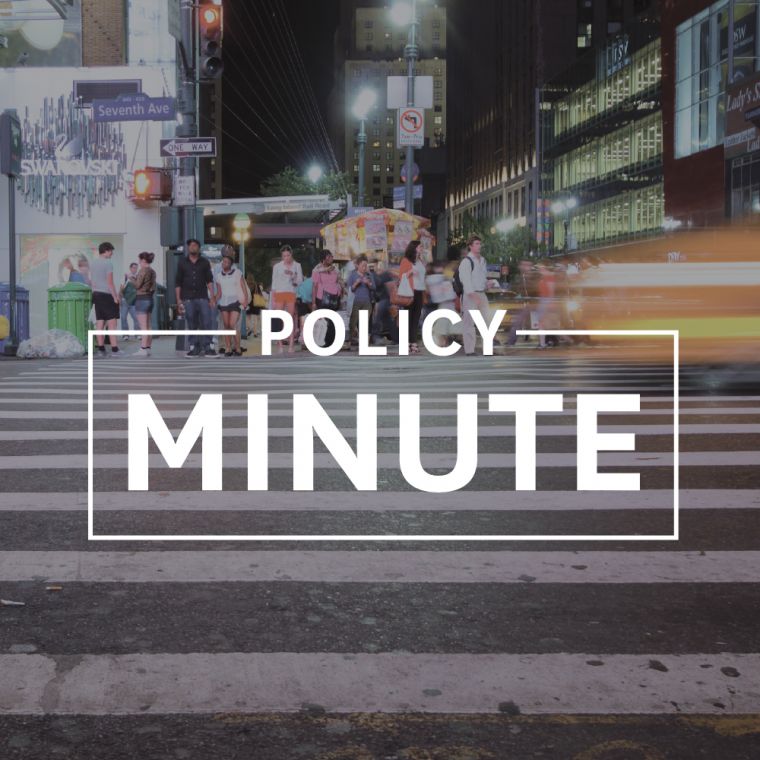
Policy Minute: New York City Public Housing

New York City Public Housing
This week, the NYU Furman Center published a new fact brief examining the New York City Housing Authority’s (NYCHA) capital and operating budget shortfalls, and the challenges the public housing authority faces in addressing the substantial physical needs of its 176,000 housing units. The brief is part of a Furman Center series that explores the critical role NYCHA plays in providing affordable housing in the city and highlights the urgent need for federal, state, and local policymakers to prioritize its financial stability.
As New York works to preserve and stabilize its public housing, this Policy Minute explores related research, recent developments, and viewpoints.
Recently
The federal monitor overseeing NYCHA issued an in-depth report that details the pervasive poor conditions in New York City public housing. The report identifies priority action areas to address, including lead paint, mold, pests, elevators, heat, and hot water. Read the report.
An audit report released by the New York City Comptroller describes inadequate preventive roof maintenance and repairs at several NYCHA housing developments. The report underscores the need for proper roof maintenance to preserve building integrity and protect the health of residents. Read the report.
By the Numbers
- NYCHA is the largest public housing authority in the United States and its developments house over 400,000 New Yorkers.
- NYCHA manages 326 developments in all five boroughs.
- In 2017, the median household income for public housing residents was $18,473 compared to $61,297 for residents of all other housing.
- Over 85 percent of NYCHA units are located in gentrifying or high-income neighborhoods.
- The estimated cost to repair NYCHA building systems that are already beyond their useful life, or that will be beyond their useful life within five years, is $31.8 billion; for twenty years, it is $45.2 billion.
Furman Center Research and Resources
- NYCHA’s Outsized Role in Housing New York’s Poorest Households examines NYCHA’s stock of public housing as a vital source of affordable and stable housing for New Yorkers with the lowest incomes. The report notes that NYCHA provides more affordable housing to households than any other place-based housing assistance program in the city. Read the report.
- How NYCHA Preserves Diversity in New York’s Changing Neighborhoods outlines public housing’s contribution to New York City’s racial and economic diversity in gentrifying and higher-income communities. Read the report.
- In the article Linking Residents to Opportunity: Gentrification and Public Housing, Furman Center Faculty Director Ingrid Gould Ellen and Samuel Dastrup of Abt Associates find that most New York City public housing developments are now surrounded by neighborhoods with increasing and higher than average incomes. The article finds that NYCHA residents appreciate and appear to benefit economically from neighborhood improvements, though some sense a divide between their housing development and the surrounding community. Read the article.
Additional Research and Reports
- In December 2018, New York City announced NYCHA 2.0, a comprehensive ten-year plan to preserve and repair the city’s public housing stock. The plan outlines NYCHA’s strategy to resolve $24 billion in repairs and implement new programs that improve maintenance and operations.
- NYCHA’s Physical Needs Assessment (PNA) accounts for the short-term and long-term capital needs of each development and is performed every 5 years. These estimates help inform planning for infrastructure improvements, modernization, and upgrades. Read the report.
- NYCHA’s Crisis: A Matter for All New Yorkers, highlights the importance of NYCHA for New York City’s economy. The Regional Plan Association report describes NYCHA residents’ contributions to several sectors of the city’s workforce and highlights NYCHA development space as a community benefit that provides resources such as senior centers, open space, and childcare facilities. Read the report.
- An interim evaluation report examines how the Rental Assistance Demonstration program (RAD) is being implemented by public housing agencies (PHAs) across the country. The RAD program was established to help PHAs address the backlog of capital needs for the nation’s 1.1 million public housing units. Read the report.
Viewpoints
- On the Represent NYC program, panelists discuss the future of NYCHA under its new leadership and the importance of engaging NYCHA residents in developing solutions. Panelists include Alicka Ampry-Samuel, Chair of the City Council Committee on Public Housing, Council Member Carlina Rivera, Julian Morales at GOLES, and Victor Bach at Community Services Society. Watch the video.
- Gotham Gazette writes a detailed overview of the challenges confronting NYCHA as the new Chair begins his tenure. Read the story.
- Jessica Katz of the Citizens Housing and Planning Council offers lessons from London for New York to consider for improving public housing. The author highlights bold leadership, a housing quality standard requirement, and tenant engagement as key components of London’s public housing turnaround. Read the commentary.
- The Queens Daily Eagle reports on a NYCHA tenant campaign to oppose the Rental Assistance Demonstration (RAD) program. Campaign organizers express concern that the program does not focus on buildings with the greatest repair needs and that the shift of management from public to private developers may lead to resident displacement. Read the article.
- A Joint Center for Housing Studies panel discussion grapples with the future of public housing, including a debate about the federal Rental Assistance Demonstration (RAD) program that shifts management of public housing units from public to private entities. Watch the panel discussion.
- An Urban Institute blog addresses the uncertainty of America’s public housing, describing the financial challenges faced by NYCHA and smaller housing authorities across the nation. Read the blog.


